14 Fun and Educational Indoor Activities for Toddlers
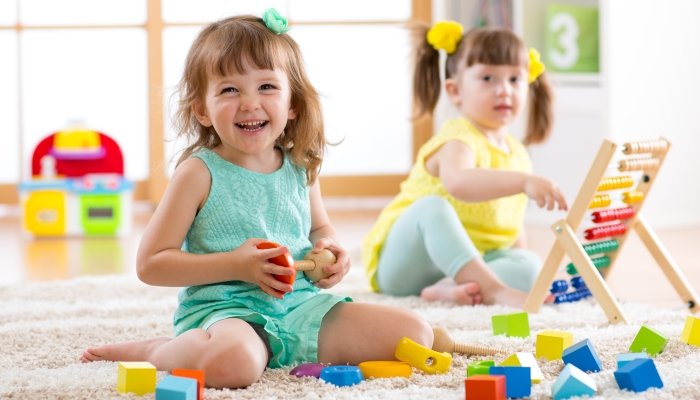
- Indoor activities are the perfect way to keep the kids entertained on a rainy day.
- Children learn through play, so keeping your busy toddler occupied with a learning activity is a good idea.
- Engaging your child’s senses will make indoor activities more engaging and spark your child’s imagination.
- You don’t need to break the bank to create kids’ activities your toddler will love.
Toddlers are naturally curious, fun-loving creatures. Whether you’re stuck inside thanks to bad weather or isolating with a nasty illness, having some toddler-approved indoor activities up your sleeves could help to pass the time.
Toddlers are busy people, so you don’t want to spend ages setting up an activity. There’s no guarantee it will hold their attention, so what you want are quick and easy indoor activities you can put together without much effort.
So whether you need an engaging activity to fill ten minutes so you can drink your coffee before it goes cold or a fun playdate activity, we’ve got you covered. There are so many great indoor activities for toddlers, from crafty makes to scientific experiments and imaginative play to hands-on learning.
If your toddler needs your help to play, hands-on activities are a great way to encourage independence. Keep your toddler busy on rainy days with engaging indoor activities they can do with minimal supervision.
Sensory Play
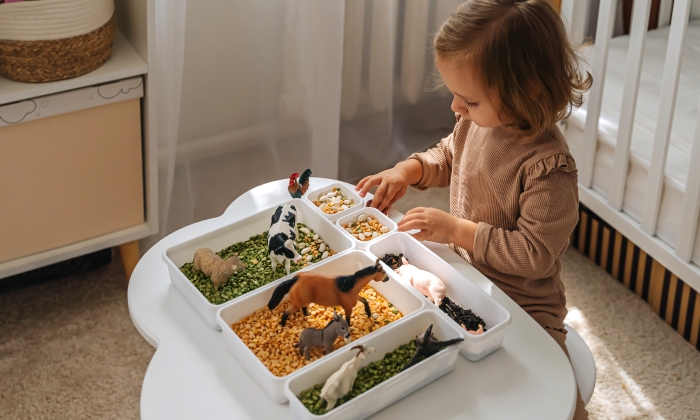
Sensory activities are messy, fun, and great for developing fine motor skills. Exploring different textures and materials also gives your child plenty of opportunities to develop their vocabulary on a rainy day.
Materials Needed
To create an engaging sensory activity, you will need:
- Items with different textures. The crucial thing is to have a mix of items so there are different textures, shapes, and sizes to be explored. You’ll want a mix of rough, soft, smooth, bumpy, and anything else you can find. You can buy sensory toys offering various textures or get creative with non-toxic items found around your home.
- Safe, non-toxic items of various shapes and sizes. Foods make for fantastically fun sensory play. As well as the textures, your child will get to experience the different smells and tastes as they play. As an added bonus, you don’t have to worry about your toddler putting anything in their mouth. A 2017 study11. Coulthard, H., & Sealy, A.. Play with your food! Sensory play is associated with tasting of fruits and vegetables in preschool children. Appetite. 2017;113, 84–90. https://doi.org/10.1016/j.appet.2017.02.003 found that sensory play with fruits and vegetables can encourage preschoolers to try the foods at mealtimes.
Toy Excavator
This is a guaranteed crowd-pleaser. Your toddler will love rescuing their toys from a sensory-tastic hiding place. You can hide their toy dinosaurs in the sandpit and provide spades and rakes to help them excavate.
Or hide plastic toys in tubs of foods showcasing different textures: cooked spaghetti, jello, rice, and baked beans. While you may want to limit how often you do these tasks because of food waste, they’re fantastic for occasional activities.
Sensory Mark Making
It’s always a good idea to mix up how you teach your children. While pencils and paper are the tried and tested methods to teach letters, sensory mark-making is a fun, hands-on way to learn. All you’ll need is a plastic tray, something to write with (a paintbrush or even a finger will do), and various materials to use as a canvas.
Shaving foam is always fun; you could add a few drops of food coloring to make it pretty. You could also use a thin layer of play sand or plain flour for another sensory experience.
Color Sorting Activities
Create some sensory bins organized by color, and encourage your child to empty the bins and explore the various items. For example, in the green sensory bin, you could place a leaf, a green car, some green fabric, a green feather, and a green ball. Encourage your child to describe each item as they remove it; what does it look like, and how does it feel?
Once all the sensory bins are empty, have your child reorganize the items by color. Discuss which items are bigger or smaller and which are heavier or lighter. Be descriptive and encourage your child to get creative when exploring the items.
Don’t worry; the sensory bin doesn’t have to cost money. A simple cardboard box or empty Tupperware will provide a sturdy sensory bin.
Creative Arts
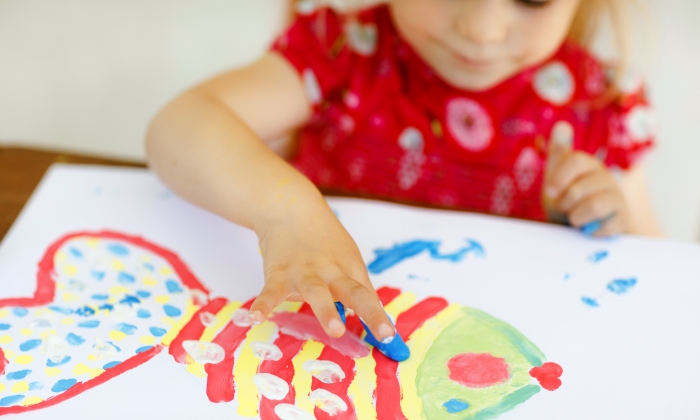
Crafts are likely one of the first things to come to mind when considering indoor toddler activities for a rainy day. There are so many awesome ideas for fun and easy craft activities you can make with your toddler. Crafts and creativity are worth encouraging because they are good for developing fine motor skills and improving concentration skills.
Materials Needed
- Non-toxic paints
- Drawing paper, construction paper, canvases
- Washable markers and crayons
Mark Making
Mark-making is a great way to introduce your busy toddler to art. Your child will learn hand-eye coordination, perfect their pencil grip, and start to master the basics in preparation for learning to write in the future.
Plain paper, coloring in books, and a selection of pencil crayons, crayons, and felt tips are a fun way to keep kids busy indoors. With younger children, you may want to store any pens out of reach, but as your child grows, you can set up a craft area they can access anytime. To mix things up, use a cardboard box or toilet paper tubes as a blank canvas.
Finger Painting
Finger painting is fun because it’s messy, creative, and something you don’t get to do daily. Your child will love using their fingers to mark the paper and mixing paints with their hands. Have plenty of wipes ready for the clean-up because finger painting is a messy business.
Collage Making
Toddlers generally love gluing and sticking (aka making a mess), so this is bound to be a hit. For younger toddlers, have a selection of scraps in various colors and textures, and encourage your child to stick them onto a blank piece of paper. Older toddlers can cut the scraps themselves with supervision, and using scissors is fantastic for their motor skill development.
Building and Construction
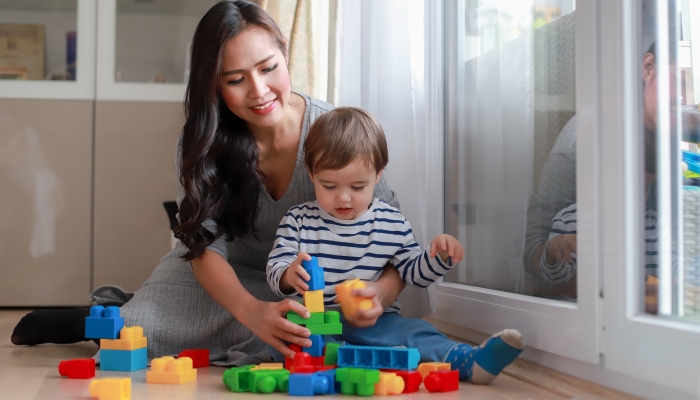
Toddlers absolutely love to build towers and knock them over. In fact, their favorite game will likely be having you build towers for them to knock over. Building and making are great ideas to develop fine motor skills and hand-eye coordination. As your toddler’s hand-eye coordination develops, they’ll be able to build more effectively.
Materials Needed
- Building blocks
- Playdough
- Building tiles
If you usually keep the building toys tidied away, simply having them out on display will serve as an invitation to play on a rainy day. If you want to turn construction fun into an activity, you could try the following prompts:
Block Stacking
This is perfect for younger toddlers who are working on their hand-eye coordination. Start off with big, light blocks that your child will be able to stack. It may take them a while to figure out how to build up without accidentally knocking them down. As your child grows, you can challenge them to build even bigger towers.
Playdough Sculpting
Playdough is lots of fun for preschoolers. Your child will love exploring cutters and shape-making with different colored doughs. Look online for homemade playdough recipes to include different smells for a sensory experience.
As your child develops their fine motor skills, you can challenge them to sculpt the playdough into different shapes. Not only will this improve their hand control, but it will also boost their vocabulary and set them up for early math skills.
House Building
Whether you use wooden blocks, magnetic tiles, or building bricks, your child will love creating a home for their small toys. Pick out a small toy and challenge your toddler to build them a home. This fun building activity may become an independent, imaginative game, so have a warm cup of coffee ready just in case.
Pretend Play

Toddlers are experts at pretend play. They have endless imaginations and can invent a game using pretty much anything. They often act out familiar stories or real-life experiences, making them fun to watch.
Materials Needed
- Open-ended toys. Open-ended toys are perfect for imaginative play. Rather than being designed for a specific purpose, open-ended toys can be whatever your child wants them to be. Lengths of fabric can become costumes, blankets, or capes. Wooden rainbows can become miniature slides, dolls’ cribs, or tiny houses.
- Imaginative playsets. There are many different pretend play sets to choose from, and your child will likely have a selection to choose from before they outgrow imaginative play. Medical sets, toy kitchens, dolls and figures, and play animals are all great for imaginative play. These items provide a prompt for your child to encourage their creativity.
- Dress-up clothes. Dressing up clothes are great role-playing props. Whether your child likes being a princess, a firefighter, or a creepy monster, there will be many costumes to choose from. Preschoolers often use dress-up clothes to act out their favorite films and stories.
Imagination games don’t come naturally to all adults, so here’s some inspiration to get your creative juices flowing:
Play Cafe
Invite your toddler into your imaginary cafe and have them choose an item from the menu. Prepare and serve their item, and ensure they pay before they leave. For extra giggles, throw in some cafe mishaps like incorrect orders and dropped plates.
Families
Your toddler will likely love role-playing families. You only need a doll to be the baby, and then your toddler can choose who they want to be. They may want to be the parent or surprise you by taking on the role of the family dog.
Role-playing real-life situations can teach your child valuable social skills and help them to develop empathy. Try to include real-life situations in your role-play games so your child can master some real-world skills while they play.
Educational Games
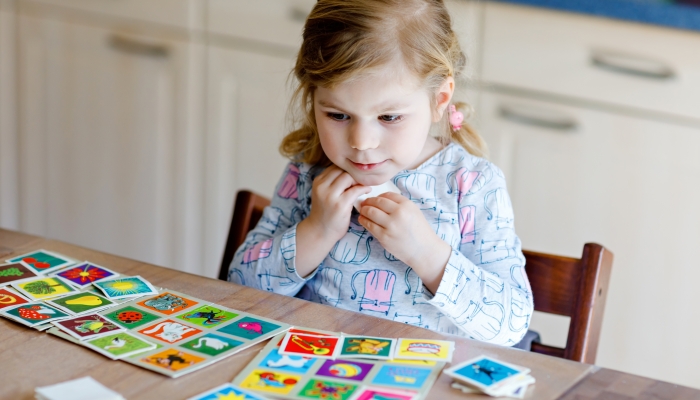
Kids learn through play, so you could argue that all games are educational, but some games have more of a focus on educational value. It helps to pick games that complement your child’s development stage.
Materials Needed
- Everyday items found around the house
- Foam or wooden letters and numbers
Scavenger Hunt
An indoor scavenger hunt can be an excellent way to burn off energy when you’re stuck indoors. If you want to plan ahead, you can print off a picture list so your child can tick off each item as they locate it. Alternatively, you can simply shout out the names of the items you want your child to find.
This activity is a good way to boost your child’s vocabulary and improve their gross motor and recall skills.
Find the Letter
This is a fun activity to help your child identify different letters. Place some letters on the table and have your child find you a specific one. It makes sense to start with the letters in your child’s name, as that is the first word they’ll learn to write. For a younger toddler, only give them three letters in total to choose from.
Once your child can identify letters easily, you can make finding the letter more difficult. You can use magnetic letters, give your child a magnetic fishing rod, and set the letters in jelly for extra fun.
What’s Missing?
This is a fun activity that will boost your child’s memory skills. You’ll need a tray, a piece of fabric, and a collection of small items. Arrange the items on the tray and give your child 30 seconds to look at them.
Then, have your child close their eyes while you remove an item from the tray. Hide the stolen item under the fabric so your child can’t see it. When your child opens their eyes, ask them what’s missing from the tray. As your child masters this game, you can add more items to the tray to make the game more challenging.
References
- Coulthard, H., & Sealy, A. (2017). Play with your food! Sensory play is associated with tasting of fruits and vegetables in preschool children. Appetite, 113, 84–90. https://doi.org/10.1016/j.appet.2017.02.003
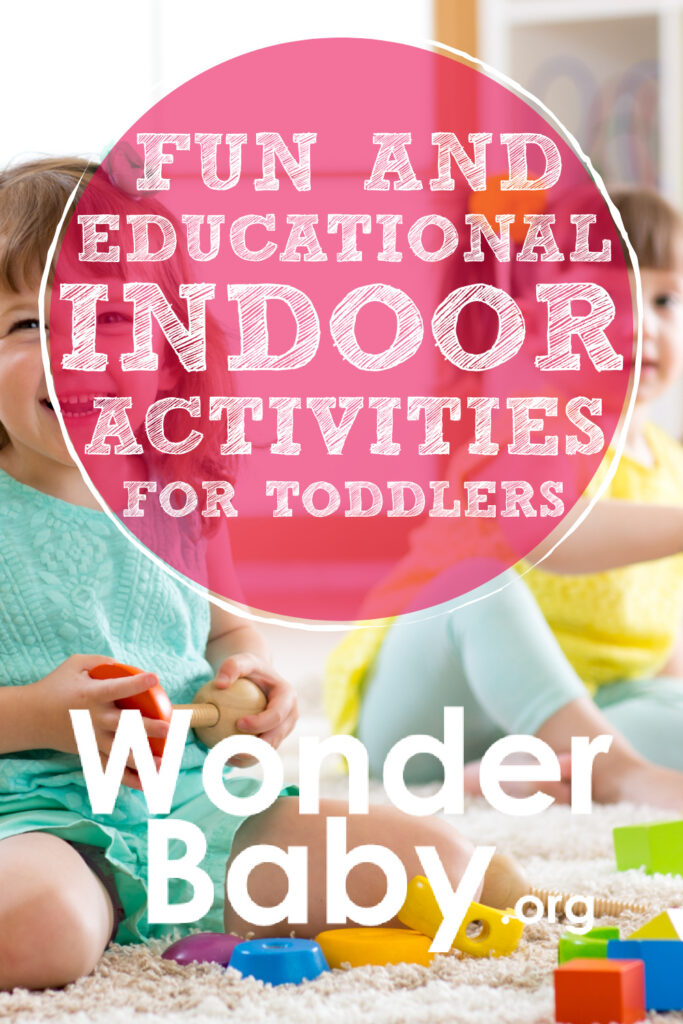
Related Posts

Braille and Literacy, Toys, Visual Impairment
24 Braille Toys for Kids Who are Blind
Everything from alphabet blocks to raised line coloring pages and activity books to puzzles to card and board games... and so much more! And it's all in braille ready for...
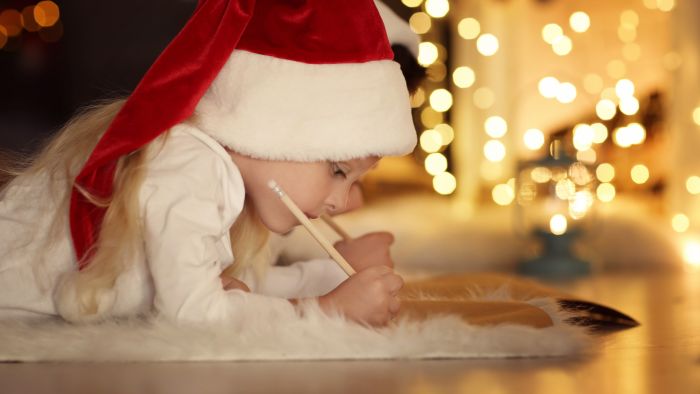
Holiday Crafts and Ideas
Should Parents Lie to Their Kids About Santa Claus?
Should parents lie about Santa? Find out how to balance trust, magic, and holiday traditions right here!
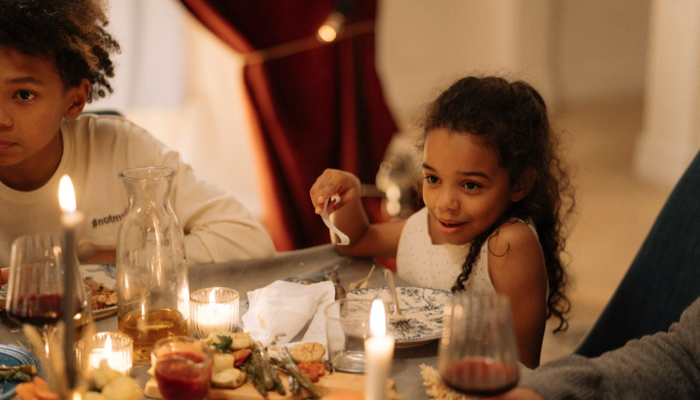
Holiday Crafts and Ideas, Special Needs
5 Tips for a Peaceful Thanksgiving with Your Child with Disabilities
Thanksgiving can be a joyful yet overwhelming holiday, especially for families with children who have sensory, motor, or dietary needs.